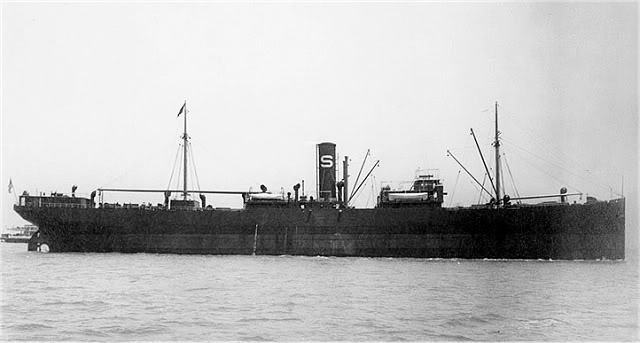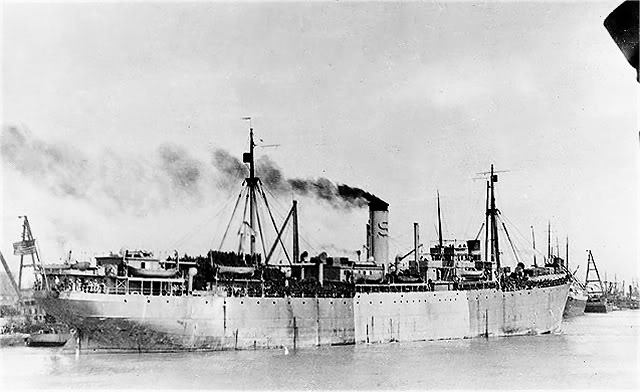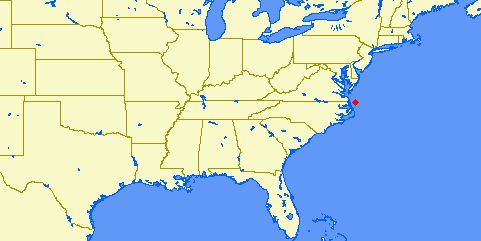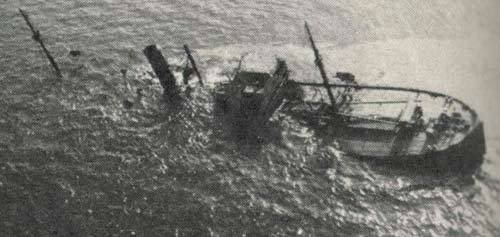Auke Visser's MOBIL Tankers & Tugs Site | home
Tiger - (1931-1942)

SS "Tiger", Photographed prior to her World War I era Navy service.
Cargo Ship: Built in 1917 by the Union Iron Works, San Francisco, CA;
Acquired by the Army 12 November 1917;
Acquired by the Navy 23 December 1917 and commissioned the same day;
Decommissioned 23 August 1919 and returned to her owner, the Standard Transportation Co., of Delaware.
Fate unknown.
Specifications:
Displacement 9,960 t.;
Length 410';
Beam 56';
Draft 27' 6";
Depth of hold 29' 6";
Speed 10.6 kts.;
Complement 114;
Armament one 6" and one 3".
SHIPBUILDING
THE steamer "Tiger," built to the order of the Standard Transportation Company of Delaware, was launched on April 20 at the Po-trero plant of the Union Iron Works. The moulded dimensions of the "Tiger" are 410 by 56 by 33 feet 6 inches, her engines 27-47 and 78 inches cylinder diameters by 48 inches stroke and of 2600 horsepower. She is fitted with three Sotch marine boilers. She was christened by Mrs. C.O. Flint, daughter of D.G. Schofield, chairman of the Board of Directors of the Standard Oil Company of California.
Source : Pacific marine Review, Volume 14, May 1917.
|

Homeward bound with 2,772 soldiers on board, at St. Nazaire, France, 1919. Note that she retains the "S"
smokestack marking of her owner, the Standard Transportation Company.
"Tiger" sinking after being torpedoed.
Dictionary of American Naval Fighting Ships:
The first Tiger (Id. No. 1640)-a single-screw, steam freighter built at San Francisco, Calif., by the Union Iron Works-was completed
in June 1917 and operated as a merchant ship by the Standard Transportation Co., of Delaware, until chartered by the War Depart-
ment on 12 November 1917. The ship was fitted out at New York for the Army Transportation Service, received a Navy armed guard
on 30 November, and carried supplies to France for the American Expeditionary Force through the autumn of 1918. On 23 Decem-
ber at Norfolk, Va., the ship was transferred to the Navy Department and commissioned the same day.
Assigned to the Naval Overseas Transportation Service and refitted for naval service, Tiger took on a cargo of food and general
Army supplies and departed Hampton Roads on 9 January 1919, bound for France. The ship reached Le Havre on the 24th and
discharged her cargo. After voyage repairs, she got underway on 7 February and proceeded, via Norfolk, to New York where
she arrived on 3 March. There, she was inspected and found suitable for conversion to a troop transport. On 7 March 1919, the
ship was transferred to the United States Cruiser and Transport Force to assist in the formidable task of returning some two
million American troops from Europe. By mid-summer, most of the doughboys had been returned; and Tiger was transferred to
the 3d Naval District on 29 July. The ship was decommissioned on 23 August and returned to her owner the same day.
Additional Info by Starke & Schell Registers :
TIGER - 1917 USA 1 Triple (10½)
6,274 GRT for Standard Transportation Co. of Delaware, New York 410.0 x 56.0
General cargo vessel built by Union Iron Works Co., San Francisco (6) #137 215248
(12/1918 - 8/1919 U. S. Navy requisition - Naval Overseas Transportation Service #1640, 3/1919 to Cruiser Transport Force)
1928 - refitted - "carrying oil fuel in bulk"
1931 - Standard Vacuum Transportation Co., Inc., New York
1935 - Socony-Vacuum Oil Co., Inc., New York
Torp. and sunk by U 754, 1 April 1942, in 36.50N-74.18W, voy. Aruba - Norfolk, fuel oil
Additional information from Uboat.net :
Name: Tiger
Type: Steam tanker
Tonnage: 5.992 tons
Completed: 1917
Owner: Socony-Vacuum Oil Co Inc, New York
Homeport:
Date of attack: 1 Apr, 1942
Nationality: American
Fate: Sunk by U-754 (Hans Oestermann)
Position: 36.50N, 75.49W - Grid CA 7381
- See location on a map -

Complement: ? men (1 dead and ? survivors).
Convoy:
Route:
Cargo:
History:
Notes on loss: The only casualty was a fireman in the engine room. The survivors, including 6 navy gun-crew men, escaped in 3 lifeboats.
